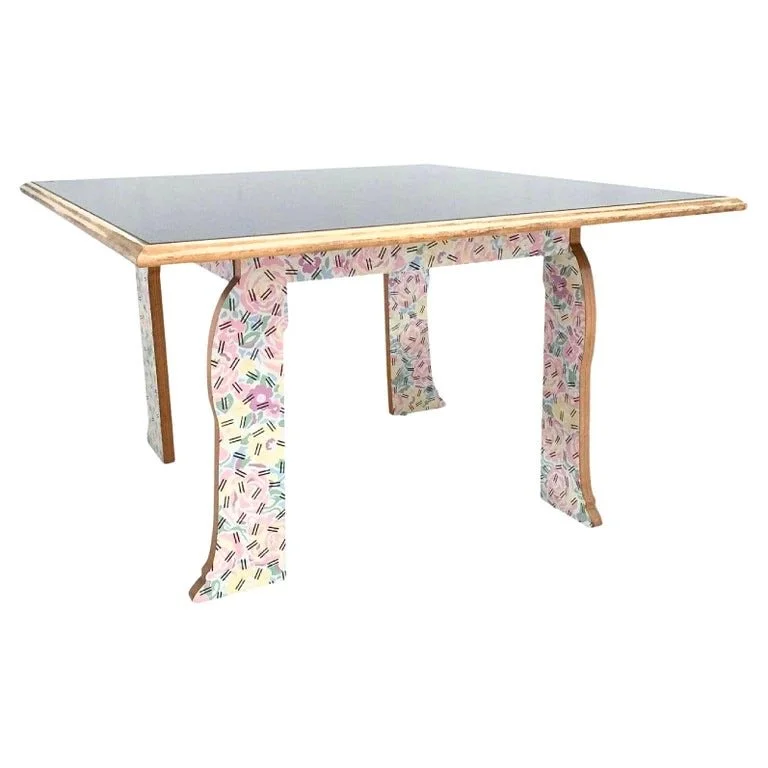Robert Venturi for Knoll Postmodern Square Dining Table Model No. 65848, 1984
Robert Venturi for Knoll Postmodern Square Dining Table Model No. 65848, 1984
Robert Venturi for Knoll Postmodern square dining table Model No. 65848, 1984. Cabriole legged dining/ center/ work table in iconic postmodern "Grandmother's Tablecloth" printed laminate with black laminate top by Robert Venturi for Knoll. Model #65848. Extremely rare piece. Gorgeous colorful pattern and playful design.
A leader and drum beater for the Postmodern movement, Robert Venturi designed a collection of furniture alongside his partner in design and life, Denise Scott Brown, for Knoll in 1984. The Venturi Collection epitomized both architect’s cerebral, pioneering writings that defined the next wave of Modernism that Venturi and Scott Brown themselves led. Working with Knoll Design Director Jeffrey Osborne, the architect's series of tables and chairs were a contradiction of classical form – an abstraction of historic furniture styles intended to be representational rather than literal.
Using their characteristic wit and charm, Venturi and Scott Brown reinterpreted prominent styles of Chippendale, Empire, Queen Anne, Art Deco, Gothic Revival, Hepplewhite, Art Noveau and Biedermeier. The resulting collection combined symbolism and modern technology in an expression that looked to the past, present and future of furniture design.
Venturi spent more than 5 years working on his 1984 collection for Knoll and his designs expressed his deep admiration for tradition and history while at the same time his trademark penchant for brilliant wit and intelligent humor. The example available here has its original finish and color and maintains its paper label underneath (quite rare, as items were produced with no permanent label or makers mark as per Venturi’s design)
“I do think that in a way, these [chairs] are a stylization of a historical period. It is convenient and conventional to divide up furniture into periods and styles. We liked the IDEA, in this case, that the expression of a style and the symbol was a “sign” and that there was no ambiguity. You would never take it for a real Queen Anne chair.
We liked the idea of the stylistic aspect – like a sign, making it flat like a billboard, like a drawing. For that reason, we used just the profile, the Silhouette of a chair. Of course, when you see it from the side you see it as kind of like an Alvar Aalto chair.”
Robert Venturi 1984.

